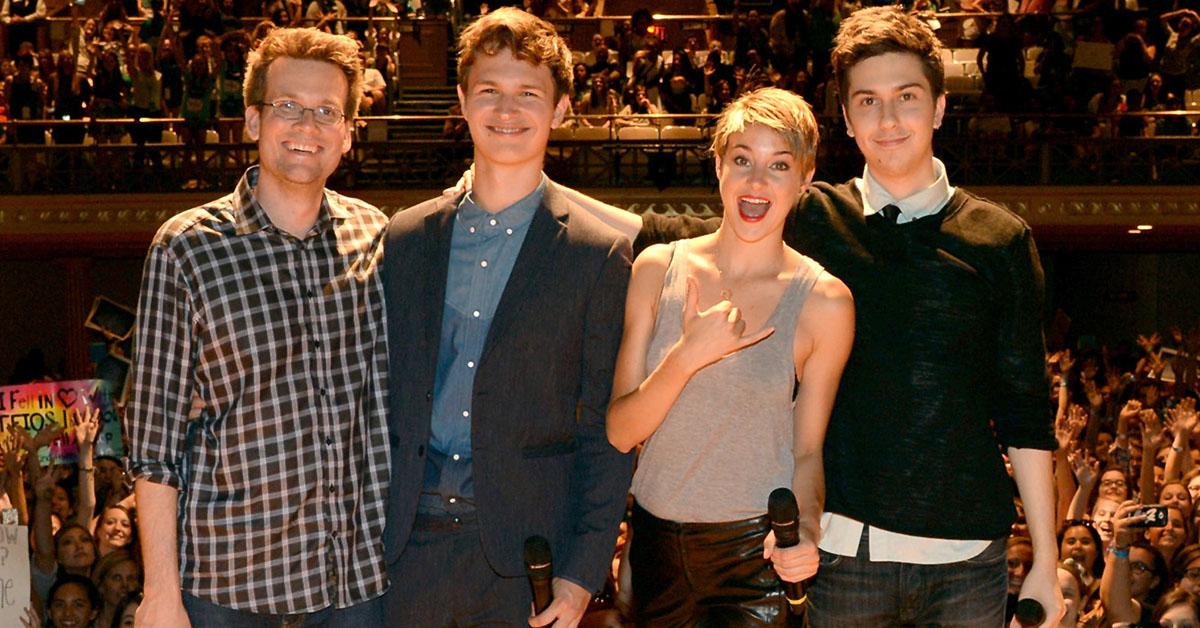

The support group leader, Patrick, in many ways resembles a youth pastor, which is a large part of the reason that Hazel does not have much regard for him. Hazel and Augustus meet in a church at a support group meeting for teenagers with cancer. Organized religion, in the form of Christianity, plays a minor role in The Fault in Our Stars. In many ways, van Houten sounds like Hazel did at the beginning of the movie, too skeptical to give any idea a fair trial, but now Hazel, having been exposed to Augustus’s belief, refuses to agree with van Houten. Van Houten is intensely nihilistic, and his absolute refusal to believe in anything allows him to serve as a foil for the newly questioning Hazel, who rejects his pessimistic worldview.

Hazel’s newfound receptiveness to belief is both challenged and emphasized when she and Augustus meet Peter van Houten, a novelist whom Hazel has admired for years. What’s much less expected is Augustus’s response while he is uncertain exactly what he believes, he confidently asserts that he “believes in something.” Augustus often seems to be cut of the same cloth as Hazel, so juxtaposing his open agnosticism with her adamant unbelief proves to Hazel-and to the audience-that being intelligent and teenaged and skeptical doesn’t have to lead to atheism. Hazel’s voice-over narration and sardonic dialogue reveal her deep skepticism about nearly everything early on, so it’s no surprise when she tells Augustus that she believes in neither God nor angels and is disinclined to believe in an afterlife. Ben Richardson’s masterful cinematography helps the unique story soar on the silver screen with all its original poignancy and humor.Īny story with a terminally ill narrator is bound to raise metaphysical questions, and The Fault in Our Stars is no exception.
CHARACTERS IN THE FAULT IN OUR STARS MOVIE MOVIE
In the movie adaptation, they are brilliantly portrayed by Shailene Woodley and Ansel Elgort, respectively. Hazel and Augustus are both classic Green characters: witty, sarcastic, intelligent, and philosophical. Using the tagline “one sick love story,” it tells of the romance between teenagers Hazel Grace Lancaster and Augustus Waters, both of whom have cancer. It’s always in the eyes, isn’t it? Woodley doesn’t have to say a thing - her eyes are a window into her mind and her heart.Last week marked the premier of the movie adaptation of The Fault in Our Stars, originally a bestselling young adult novel by John Green. Unless you’re experiencing a similar situation, Hazel’s existence is impossible to know, yet Woodley’s performance displays a depth and purpose mostly unseen in the spate of big-screen young adult novel adaptations we’ve been barraged with over the past decade (Jennifer Lawrence as Katniss Everdeen in "The Hunger Games" would be the other exception). In the hands of other actresses, Hazel’s attitude may seem trite but like the whole of Woodley’s performance, it feels organic and original. But Gus, who is awesome, doesn’t care, declaring his love will not die with Hazel. She’s falling in love and love, even when you’re dying, conquers all - or does it? She considers herself a grenade and fears that when her cancer kills her, her end will destroy Gus. Gus, once a talented basketball player, may have lost a leg to cancer, but he didn’t lose his charm.Ī courtship begins and, for Hazel, so does an internal struggle. After the support group, he doesn’t just ask her out, he tells Hazel she’s beautiful. Gus can’t take his eyes off of Hazel, and he doesn’t care if she knows it. It’s here Hazel meets the confident, cocky, handsome Augustus Waters (Ansel Elgort). The group’s led by Patrick: a guitar-playing, Jesus-loving, cancer survivor whose overzealous empathetic nature is grist for Hazel’s perfectly-pitched snark. Hazel’s parents encourage her to attend a cancer support group in a church basement.


 0 kommentar(er)
0 kommentar(er)
